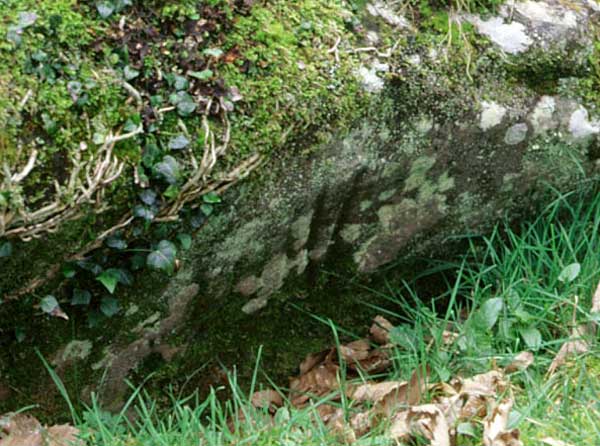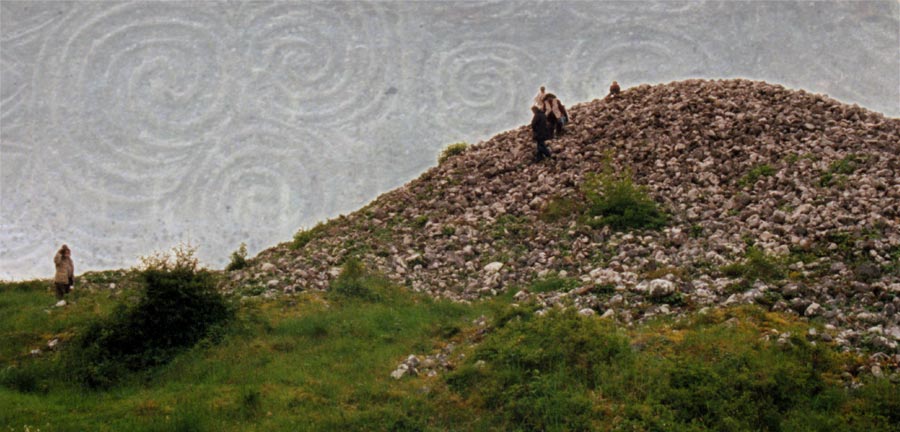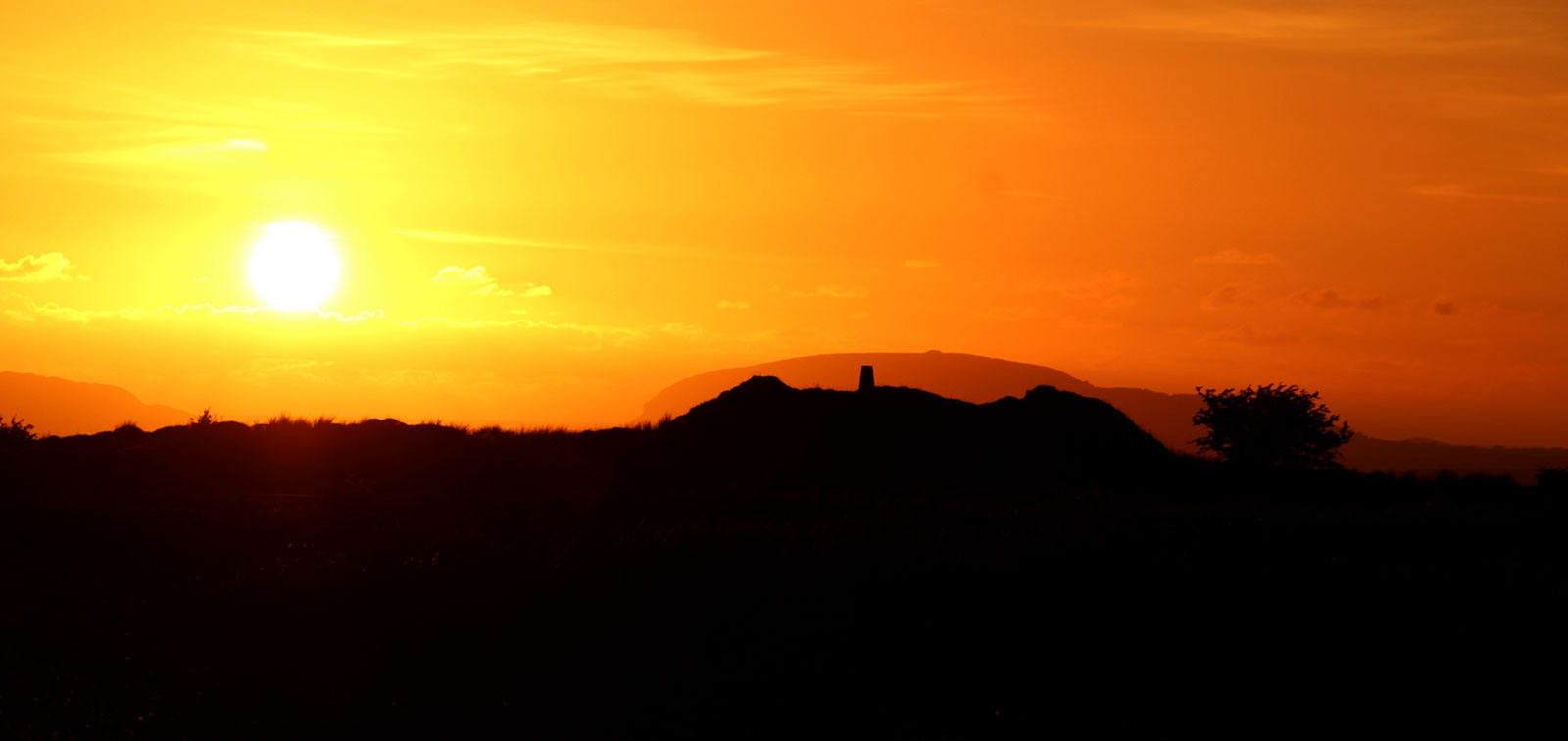Megalithic Art
One of the kerbstones on the south portion of the cairn at Heapstown has six parallel vertical grooves of different lengths engraved on its outer surface. The sandstone slab is covered with moss, lichen and ivy, and suggestive depressions around the six grooves may possibly be more engravings.
Up until a few years ago the enigmatic engravings in Cloverhill near Carrowmore were the only engravings associated with a monument of this type in County Sligo. In recent times two engravings were discovered on the central structure of the mound of Listoghil at Carrowmore.
In the stories and tales collected from the local National schools in the forties, it is mentioned that there was megalithic art on a standing stone near the cairn. This fallen pillar stone lies about 50 meters to the south east of the cairn, though I found none on the top face when I examined it. There was however a ring on the surface, possibly formed by fossils, which may have been interpreted as art. The other surface lies buried.

In the National Schools Survey there is a diagram of an engraving from another kerbstone which 'was removed to Dodd's Field' at some unspecified time in the past. Dodd's Field is a peninsula that projects out into Lough Arrow on the other side of the river Uinshin. The symbols are very similar to engravings on the Hag's Chair, the only remaining decorated kerbstone of Cairn T at Loughcrew, the only remaining engraved kerbstone outside the Boyne Valley.
Another section of the National Schools Survey mentions ogham script on the stone which once stood at the top of the Cairn. This was said to have been moved to Annagh National School beside the River Uinshin, and has since disappeared. The ogham pillar stone is very interesting. There is a townland called Ogham nearby. I suspect that the pillar stone belonged to the local MacDonagh tribe and was a part of their inauguration ceremonies.

In medieval Ireland, upon election a chieftan went through a ritual marrage to his local territory. Inaugurations took place on mounds, the more ancient the better. The ancient mound of Heapstown was an ideal site: Aillil, a king from a thousand years earlier was said to be buried standing upright within the cairn.
The MacDonagh's ruled the area for about 400 years between the arrival of the Normans and the Flight of the Earls. They sponsored the compiling of the Book of Ballymote, which has several pages dedicated to Ogham scripts.
That is a possible four engravings mentioned in relation to Heapstown, with one only still on site. This would make the monument very important, as it is the largest decorated passage grave on the west coast. In addition to the interesting mythology and art, there are a few other features at Heapstown worth mentioning, which are covered on the next page.


